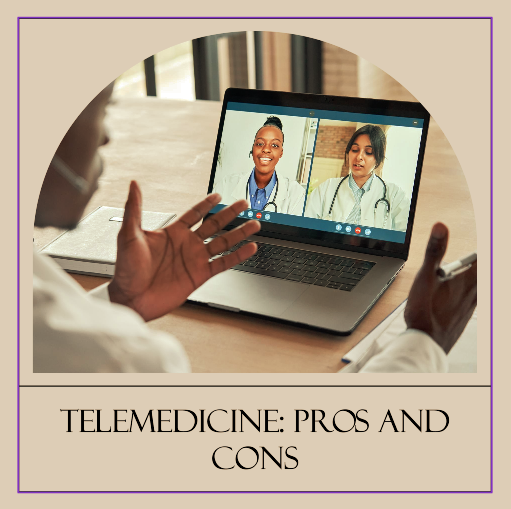
As we stride into the digital age, the healthcare industry is no exception to embracing the innovations and benefits that can be reaped from integrating technology, especially telemedicine. Telemedicine, a healthcare branch that has revolutionized patient monitoring, emergency care, and care delivery, refers to providing clinical services to patients without an in-person visit using telecommunications. This typically involves secure video conferencing platforms, telemedicine software, or mobile apps implemented by telemedicine companies. While the concept offers numerous benefits of telemedicine and improves healthcare providers’ ability to provide medical care, it comes with nuanced cons that examine the disadvantages of telehealth.
The Melting Pot of Telemedicine Benefits
One notable advantage of telehealth is broadened healthcare access, which is arguably the most significant benefit. Despite geographical barriers, it grants patients in rural areas access to quality medical care. It circumvents common scheduling conflicts, enables virtual appointments and remote consultations at the patient’s convenience, and improves patient flow.
Telemedicine facilitates real-time remote monitoring, which could crucially affect health outcomes. Physicians can adjust treatment plans by continuously assessing a patient’s condition, ensuring better patient care, and elevating Patient Satisfaction.
Another critical advantage incorporates cost savings. Telehealth cuts travel time and associated expenses, minimizes hospital stays, and decreases the financial burden on the healthcare system. Telehealth, synonymous with telemedicine, leads to insurance savings for healthcare providers due to decreased overhead costs and increased efficiency.
The Nitty-Gritty of Telehealth Disadvantages
While telemedicine is a remarkable innovation, the cons of telehealth cannot be ignored. The issues of Expensive Technology pose a significant challenge. The initial cost of setting up a robust telehealth system, including provider training, can be prohibitive for many practices. Not all patients or healthcare providers can access high-speed internet and technology infrastructure.
There’s also the undeniable importance of in-person medical visits, which telehealth to an extent, dilutes. Although telehealth increases access, it can sometimes compromise the quality of healthcare services; face-to-face consultations often allow physicians a more holistic understanding of the patient’s condition.
Insurance coverage for telehealth services can also be a complicated issue. While many companies cover virtual appointments, the insurance norms might vary between states and carriers. Therefore, patients and providers must understand the limitations and policies for their particular situation.
Traversing the Path Ahead
The effective use of telehealth involves a delicate balance, churning out the advantages while minimizing the disadvantages. Through continuous advancements and the implementation of better policies, the potential cons of telehealth, like expensive technology, limited patient interactions, and insurance coverage, can be mitigated.
With the ongoing advancements in telehealth services, it would also be crucial to focus on creating self-help options for patients, making them active participants in their health care, and improving overall healthcare access and outcomes.
The Role of Telemedicine Companies
The telehealth sphere has resulted in numerous telemedicine companies’ growth, significantly impacting Work Performance in Healthcare. Tasked with developing innovative telemedicine software, these companies are revolutionizing remote healthcare delivery. In an era increasingly focused on data, their role in Healthcare Data Management, including electronic health records, is also notable, as they bridge the gap between healthcare providers and patients, fueling the industry’s evolution towards seamless virtual interactions.
Telemedicine companies ensure their software provides secure, encrypted platforms that value and prioritize patient data safety per HIPAA regulations. This heightened focus on data security allows patients to trust the virtual health system and improves Work Performance in Healthcare by lowering data breaches.
These companies continuously strive to enhance their software’s user-friendliness and compatibility with various devices, including smartphone apps and wearable devices, broadening their reach. Their crucial role in troubleshooting and customer service is essential to sustaining Work Performance in Healthcare. Given the inevitable technical difficulties that may arise, having a robust support system significantly ensures seamless patient flow and provider workflow.
Patient Satisfaction and Telehealth Benefits
Telehealth benefits extend far beyond the basic premise of medical access. One of the major boons of telemedicine results in heightened patient satisfaction directly from improved Patient Relationship Management. The flexibility to consult physicians through video chats at one’s comfort and availability drastically reduces the chances of missed or canceled appointments.
Moreover, few things can be as disruptive to daily routines as the necessity of a hospital visit. By eliminating the need for transportation and waits at clinics or hospitals, telehealth lessens the burden, particularly for patients with chronic conditions. Further, telehealth negates the risk of exposure to hospital-acquired infections for immunocompromised patients.
Reports also suggest patients adhere better to medication or treatment schedules prescribed during telehealth appointments. The personal comfort and privacy afforded by these sessions often positively affect patient compliance, leading to better health outcomes.
The Challenge of Training Healthcare Providers
The integration of telemedicine comes with an indispensable need for training healthcare providers. Failure to do so may lead to faulty system utilization, undermining its purpose.
Proper training ensures healthcare providers can navigate the new telemedicine system with agility and precision. They need to understand the nuances of the software, from enabling secure and effective patient-provider communication to knowing how to handle potential troubleshooting.
Moreover, imparting best practices for delivering virtual care is equally important. An empathetic and patient-focused approach must be adopted, even in the virtual space, as this significantly impacts patient satisfaction.
Policy and Insurance Hurdles
The variance in insurance coverage for telemedicine services presents a significant hurdle. These policies differ widely, causing potential confusion for patients and healthcare providers. Clear and uniform insurance policies must be implemented to foster a smooth future for telemedicine.
Many carriers are still warming up to telehealth and have yet to revise their policies to include such services. This could deter patients from opting for telehealth services even when they are the more sensible alternative.
Moving forward, policymakers, insurance carriers, and telehealth providers must continue active dialogue to establish concrete, unambiguous insurance norms and regulations that will encourage the further adoption of telemedicine.
The Future of Telemedicine
As technology evolves and becomes more affordable, many of the current setbacks of telemedicine, such as high setup costs and limited patient interactions, may recede, giving way to a health landscape deeply intertwined with technology and convenience.
An emphasis on balancing telehealth with necessary in-person consultations, coupled with regulatory and technological support, all point toward a promising future for telemedicine. This transition, though complex, looks to revolutionize healthcare delivery with an emphasis on patient comfort, streamlined health systems, and cost-effective care.
Nonetheless, the road ahead entails continuous research and innovation, reliable safety measures, and a patient-centered approach for truly global, accessible healthcare.
Conclusion
As we have explored, telemedicine offers numerous advantages, such as increased accessibility to healthcare, convenience for both patients and physicians and potential cost savings. However, it also comes with challenges, including technological barriers and concerns about the quality of remote care.
Despite these drawbacks, telemedicine’s benefits often outweigh its disadvantages, making it a valuable tool in modern healthcare. Physicians are encouraged to consider integrating telemedicine into their practice to enhance patient care and streamline operations.
How might telemedicine transform your practice and improve patient outcomes? The future of healthcare is evolving, and telemedicine could be a significant part of that transformation. Explore its potential and decide for yourself.




